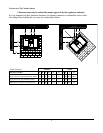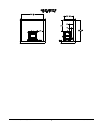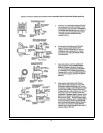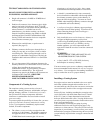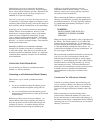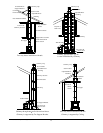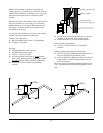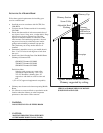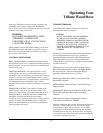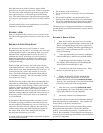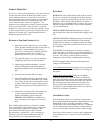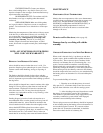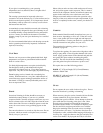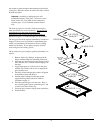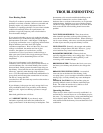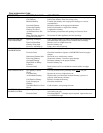
HearthStone Quality Home Heating Products Inc ® Tribute Model 8040
16
Operating Your
Tribute Wood Stove
Once your Tribute has been set in place, connected, and
assembled, you are ready to light a fire. HearthStone
Stoves tests each wood stove before we ship, so you should
be able to easily light your first fire.
¦ WARNING:
HOT WHILE IN OPERATION. KEEP
CHILDREN, CLOTHING AND
FURNITURE AWAY. CONTACT MAY
CAUSE SKIN BURNS.
Please read this entire chapter before lighting your first fire.
It explains the controls and features of your wood stove,
how to choose firewood, and how to break-in your stove
and use it on a daily basis.
CONTROLS AND FEATURES
Before lighting any fires, become familiar with the location
and operation of your stove's controls and features and learn
how to use them. For your own safety, do not modify these
features in any way.
FRONT DOOR HANDLE: The front door allows you to
load wood into your stove; a fixed handle allows you to
operate the front door and allows you to latch the front door
closed. To open the door, lift the handle to the 10 o’clock
position and pull the door. To latch the door, push the door
closed tightly then lower the handle to the 7 o’clock
position. Pull on the door handle to make sure it is properly
latched.
PRIMARY AIR CONTROL: The handle is located on the
front lower left of the stove, just under the ash lip. The
primary air control allows you to regulate the amount of air
entering the firebox. Generally, the more air allowed into
the firebox, the faster and hotter the rate of burn;
conversely, less air creates a slower burn. To fully open the
primary air intake, move the handle as far as it will go to
the left; move the handle as far as it will go to the right, to
close the primary air control.
CHOOSING FIREWOOD
Your Tribute Wood Heater is designed to only burn
firewood-also known as cordwood.
¦ CAUTION:
DO NOT USE CHEMICALS OR FLAMMABLE
FLUIDS SUCH AS GASOLINE, NAPHTHA,
KEROSENE, CHARCOAL LIGHTER FLUID OR
ENGINE OIL TO START A FIRE. DO NOT USE
CHARCOAL, PELLETS, COAL, ARTIFICIAL
LOGS OR ANY OTHER MATERIALS AS FUEL;
THEY ARE NOT SAFE. DO NOT BURN
GARBAGE.
The quality of your firewood affects heat output, duration
of burn and performance of your stove. Softwoods
generally burn hotter and faster, while hardwoods burn
longer and produce more coals. Density and moisture
content are two critical factors to consider when purchasing
wood for your stove.
The following is a list of wood species and their relative
BTU (British Thermal Unit) content. The higher the BTU
the longer the burn. Firewood with higher BTUs is
generally considered ideal for a wood stove.
HIGH: Apple, Black Birch, Hickory, Locust, White Oak,
Black Beech, Mesquite
MEDIUM HIGH: White Ash, Beech, Yellow Birch, Sugar
Maple, Red Oak
MEDIUM LOW: Black Ash, White Birch, Grey Birch, Elm,
Norway Pine, Pitch Pine, Black Cherry, Soft Maple,
Tamarack
LOW: White Pine, White Cedar, Balsam Fir, Spruce,
Aspen, Basswood, Butternut, Hemlock
Moisture content also plays a key role in the performance of
your stove. Wood freshly cut from a living tree (green
wood) contains a great deal of moisture. As you might
expect, green wood has difficulty burning and should be
seasoned before using it in your wood stove. To properly
season green wood, it should be split, stacked and allowed
to air dry for a period of one year.



